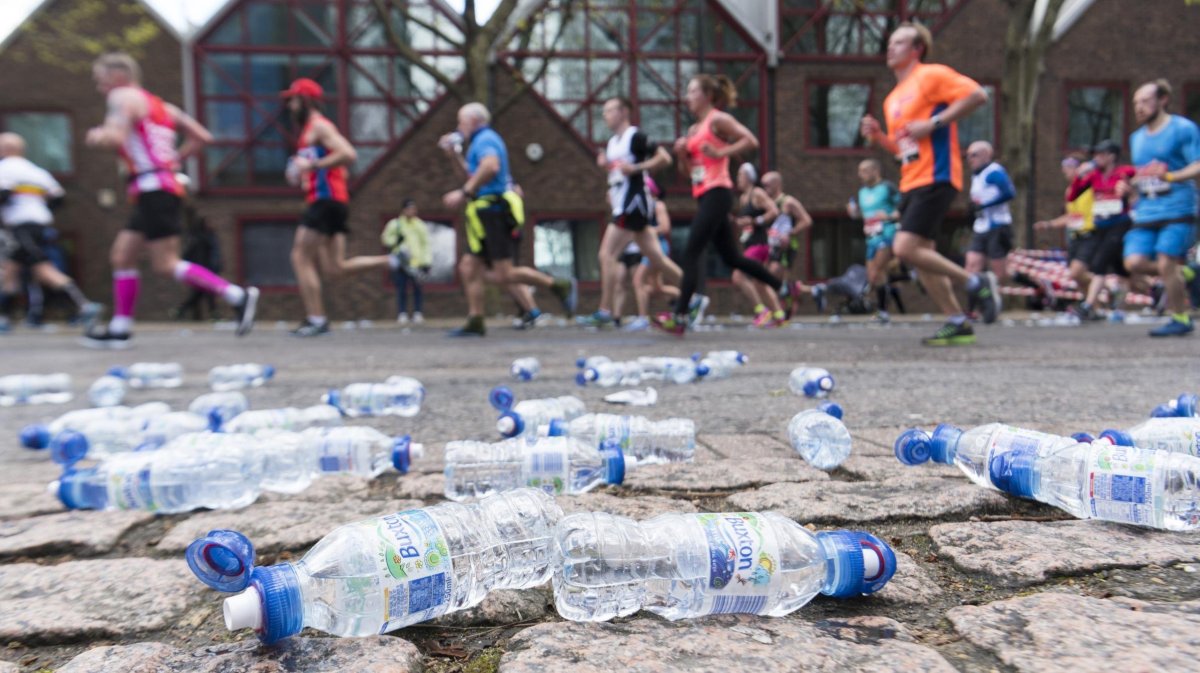PLASTIC-FREE MARATHONS
©The Telegraph / AFP
Marathons and other high-profile running events often leave behind vast trails of trash, with plastic water bottles scattered in the streets and mounds of clothing left behind at the starting line. It can be an ugly sight.
While the bottles and cups that athletes toss in the streets during marathons seem like a problem, most races do a good job of collecting and recycling that litter, according to the Council for Responsible Sport, which evaluates the environmental and social effects of sporting events around the world and offers certification for those that adhere to best practices.
Recycling is a strong option, said Shelley Villalobos, the group’s managing director, but reducing the amount used is even better. Some marathons have started to limit single-use plastic. This year’s London Marathon, for example, reduced the number of plastic bottles by more than 215,000 compared with last year, by cutting the number of drink stations on the course to 19 from 26, as well as made headlines for trying to address the problem by handing out biodegradable, liquid-filled seaweed capsules at one of its aid stations. It was one of several steps the marathon took this year as part of a goal to send zero waste to landfills by 2020.
Some races also collect tossed clothing for donation and offer composting for bananas, apples and other post-race recovery food. Yet, perhaps the biggest environmental harm is something no one really sees: carbon footprint. All the people traveling to the marathon. The world’s biggest marathons, e.g. Chicago, New York and London, have more than 40,000 runners, with many of them flying or driving to the event.
The Chicago Marathon, which is the only one of the world’s six major marathons that has been certified by the Council for Responsible Sport, offers participant shirts that are made from recycled material. The ribbon on the finisher medal can also be recycled and the marathon starts and finishes in the same park, which reduces the need for driving on the day of the race, as participants can simply walk from their house or hotel to the start and from the finish.
With that being said, Climate Neutral Group, which helps organizations limit and offset their emissions, found that 97 percent of emissions from the Cape Town Marathon came from participants’ air or road travel. In return, the marathon invested in local projects to offset those emissions and has been designated as “climate neutral” since 2014, according to the group.
In terms of my major race this year, the Ultra-Trail Du Mont Blanc (“UTMB”) has developed numerous actions to protect the natural environment and raise awareness to adopt an ecologically responsible attitude. For example, to reduce consumption of plastic, both by runners and UTMB volunteers, and therefore limit your carbon footprint and your waste production, the organization will not distribute any more disposable crockery (cutlery, beakers, bowls) at the refreshment posts. This action is called "Bring Your Own Utensils " (“BYOU”) and was first introduced at the Vibram Hong Kong 100 in January 2018 asking runners to bring their own utensils to drink and eat food at the refreshment posts.
To learn more about how to reduce your personal carbon footprint and minimize the use of plastic, not only when running around the streets or trails, you can find out more on Oceanic Global: Click here
